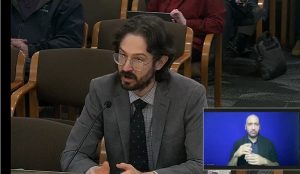Health advisory issued for lamprey from the Columbia River system
3 min read
PORTLAND, Ore.—Oregon Health Authority (OHA) is issuing recommendations on the amount of lamprey from the Columbia River and its Oregon tributaries that people should eat.
Fish tissue data from the Columbia River Inter-Tribal Fish Commission (CRITFC) show polychlorinated biphenyls (PCBs) at levels of concern in lamprey for the general population, and for PCBs and mercury for vulnerable populations (children under 6 years old, people who are or may become pregnant, nursing mothers).
Meal recommendations are needed for lamprey harvested in the advisory area, according to public health officials.
OHA issues advisories when fish or shellfish tissue data show that the levels of contaminants — in this case, PCBs and mercury — are high enough to potentially harm health. OHA calculates meal recommendations to help people better understand the number of fish meals they can safely eat in one month. These meal recommendations for lamprey are found in Table 1.
Table 1: Recommended meals for lamprey: Columbia River and its Oregon tributaries
Whole body1 meals per month
Recommended consumption rates2
| All collection sites | Contaminant | General population (People childbearing age) | Vulnerable population (Children under 6, people who are or may become pregnant, nursing mothers) |
| Columbia River and its Oregon tributaries | PCBs + mercury | 4 | 2 |
1 OHA did not convert whole body data to fillet-only data due to the physical characteristics of lamprey (high lipid content), and because a high percentage of their body weight is edible and eaten.
2 A meal is about the size and thickness of your or your child’s hand or one ounce of uncooked fish for every 20 pounds of body weight.
Eating too many fish contaminated with PCBs or mercury can cause negative health effects over time. These health effects include damage to organs, the nervous system and the brain, leading to potential learning and behavior problems. PCBs and mercury can also be passed along to babies during pregnancy or in breastmilk.
Because lamprey are consumed mainly by Tribal members in Oregon, Washington and Idaho, and these Tribes consume the whole fish as a cultural and spiritual First Food, this advisory is an important tool that can reduce exposure to PCBs and mercury, especially for the Tribes’ most vulnerable populations (especially those with thyroid and immune system problems).
Tribes, Oregon Department of Fish and Wildlife, and other organizations are working to restore Pacific lamprey numbers.
“Lamprey have been an important part of the cultures, diets, and ceremonies of Columbia Basin tribes since time immemorial,” said Aja DeCoteau, executive director of the Columbia River Inter-Tribal Fish Commission. “The tribes have been successfully leading the effort to restore this threatened fish throughout the Columbia River Basin, not only to protect its role in the ecosystem, but also to preserve our access to this important First Food. As Oregon’s largest consumers of lamprey, this consumption advisory will impact tribal people most of all. We must all work together to make limiting consumption a temporary solution because the tribes believe that the long-term solution to this problem isn’t keeping people from eating contaminated fish—it’s keeping fish from being contaminated in the first place.”
Tribes that do not have reserved fishing and hunting rights and non-Tribal members need a permit to harvest lamprey at Willamette Falls from the Oregon Department of Fish and Wildlife and must harvest in accordance with State regulation in OAR 635-017-0090. This is the only location where Tribes without reserved rights and non-Tribal members can harvest, consistent with ODFW regulations.
While it is important for people to know about contaminants in lamprey, it is equally important to continue to eat at least two meals of a variety of fish from a variety of sources each week to gain important health benefits. Fish are high in protein and a rich source of nutrients like omega-3 fatty acids. Omega-3s provide protection from heart disease and are an important brain food for adults, children and fetuses.
As future data becomes available for lamprey from the Columbia River and its Oregon tributaries, OHA will evaluate and update the advisory meal allowances as needed.
When fishing in the Columbia River and its Oregon tributaries, OHA advises fishers to visit the OHA fish advisory webpage at HealthOregon.org/fishadv for a list of other areas and water bodies with existing fish advisories and recommended meal allowances for other types of fish.






